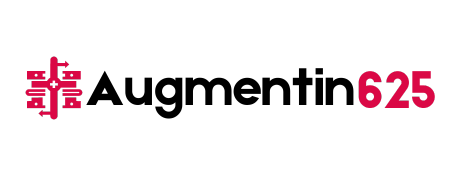
As we approach 2025, the landscape of occupational health and safety training continues to evolve. The NEBOSH Course Fee is a critical consideration for individuals and organizations aiming to invest in this globally recognized qualification. Factors like technological advancements, economic changes, and increased competition are influencing the pricing structure of these courses. Understanding these trends can help potential candidates make informed decisions.
TheNEBOSH Course Fee has seen fluctuations over the years due to various factors. With new training methods and digital resources becoming mainstream, course providers are rethinking their fee structures. In this article, we will explore the trends shaping the NEBOSH Course Fee and how they might impact learners in 2025.
Emerging Trends Influencing NEBOSH Course Fee
1. Increased Adoption of Online Learning
1.1 Flexibility and Accessibility
Online learning has significantly reduced operational costs for course providers. This shift often translates into more affordable NEBOSH Course Fees for students. Virtual classrooms, e-learning modules, and remote assessments are now integral to the learning experience, making it easier for students to access training without geographical constraints.
1.2 Technology-Driven Cost Savings
Technological advancements, such as AI-driven learning tools and automated assessments, are helping reduce the costs associated with traditional classroom training. These savings may reflect in the NEBOSH Course Fee as providers adopt more efficient teaching methods.
2. Economic Factors and Globalization
2.1 Currency Fluctuations
The NEBOSH Course Fees can vary depending on the country and currency exchange rates. As global economies stabilize or fluctuate, providers may adjust fees to remain competitive and accessible to international students.
2.2 Regional Pricing Strategies
To attract a diverse student base, course providers may implement region-specific pricing. This trend can make NEBOSH Course Fees more affordable in developing countries, catering to a broader audience.
3. Enhanced Course Offerings
3.1 Customization and Specialized Modules
Providers are increasingly offering tailored modules to meet industry-specific needs. While this customization adds value, it may slightly increase the NEBOSH Course Fee. However, the added relevance to specific job roles justifies the investment for many learners.
3.2 Integration of New Topics
With emerging health and safety concerns, NEBOSH courses now include modules on mental health, remote working safety, and climate-related risks. These additions may impact the NEBOSH Course Fees as the course content becomes more comprehensive.
Challenges in Maintaining Affordable NEBOSH Course Fees
1. Rising Operational Costs
Operational expenses such as course development, instructor training, and administrative support continue to rise. These costs can lead to slight increases in the NEBOSH Course Fees unless offset by technological efficiencies.
2. Demand for High-Quality Resources
To remain competitive, providers must invest in high-quality learning resources, such as interactive platforms and updated study materials. These enhancements, while beneficial, may contribute to higher fees.
Opportunities for Reducing NEBOSH Course Fees
1. Partnerships and Sponsorships
Collaborations with government bodies, NGOs, and corporate sponsors can subsidize the NEBOSH Course Fees. Such initiatives make the qualification accessible to a larger audience.
2. Group Discounts and Scholarships
Providers may offer discounts for group enrollments or scholarships for deserving candidates. These strategies help reduce the financial burden on individuals while ensuring steady enrollment numbers.
Future Predictions for NEBOSH Course Fee in 2025
1. Stable but Competitive Pricing
With increasing competition among course providers, the NEBOSH Course Fee is likely to remain competitive. Providers will aim to balance affordability with the quality of training.
2. Focus on Value for Money
Rather than simply reducing fees, providers may focus on offering more value, such as additional resources, mentorship programs, and post-course support. This approach ensures that students perceive the NEBOSH Course Fee as a worthwhile investment.
3. Greater Transparency
Course providers are expected to adopt more transparent pricing structures, clearly outlining what the NEBOSH Course Fees cover. This clarity will help students better understand and justify the costs involved.
How to Optimize Your Investment in NEBOSH Course Fees
1. Research and Compare Providers
Take time to compare the NEBOSH Course Fees across multiple providers. Look for those offering added benefits, such as flexible payment plans or free supplementary materials.
2. Leverage Early Bird Discounts
Many providers offer reduced NEBOSH Course Fees for early registrations. Planning and enrolling ahead can help you save significantly.
3. Utilize Government or Employer Funding
Check if your employer or local government offers financial assistance for occupational health and safety training. Such programs can offset or fully cover the NEBOSH Course Fee.
Conclusion
The NEBOSH Course Fee is poised to reflect a blend of technological innovation, economic factors, and enhanced course offerings in 2025. While slight increases may occur, the focus remains on delivering value and maintaining accessibility. By understanding these trends and exploring cost-saving opportunities, learners can make informed decisions and maximize their return on investment in health and safety training. As the demand for qualified professionals grows, investing in a NEBOSH course remains a strategic choice for career advancement.

0 Comments
Post Comment